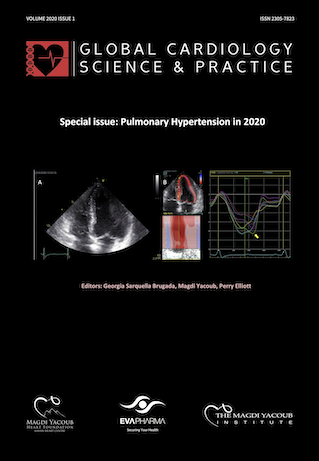Clinical presentations of hypertrophic cardiomyopathy and implications for therapy
DOI:
https://doi.org/10.21542/gcsp.2018.19Abstract
[first paragraph of article]
Hypertrophic cardiomyopathy (HCM) is diagnosed in the presence of left ventricular hypertrophy of ≥15 mm in adult index cases, or ≥13 mm in relatives of known affected patients, that is not solely explained by abnormal loading conditions. In children, the left ventricle (LV) wall thickness should be more than two standard deviations above the predicted population mean. The typical anatomo-pathological findings include myocyte hypertrophy, disarray, interstitial fibrosis and small-vessel disease. Although all the myocytes are supposed to be affected, pathological alterations are not uniformly distributed throughout the myocardium. Asymmetrical hypertrophy of the interventricular septum is the most commonly observed phenotype, but any pattern of hypertrophy is consistent with the diagnosis.
Downloads
Published
Issue
Section
License
This is an open access article distributed under the terms of the Creative Commons Attribution license CC BY 4.0, which permits unrestricted use, distribution and reproduction in any medium, provided the original work is properly cited.


